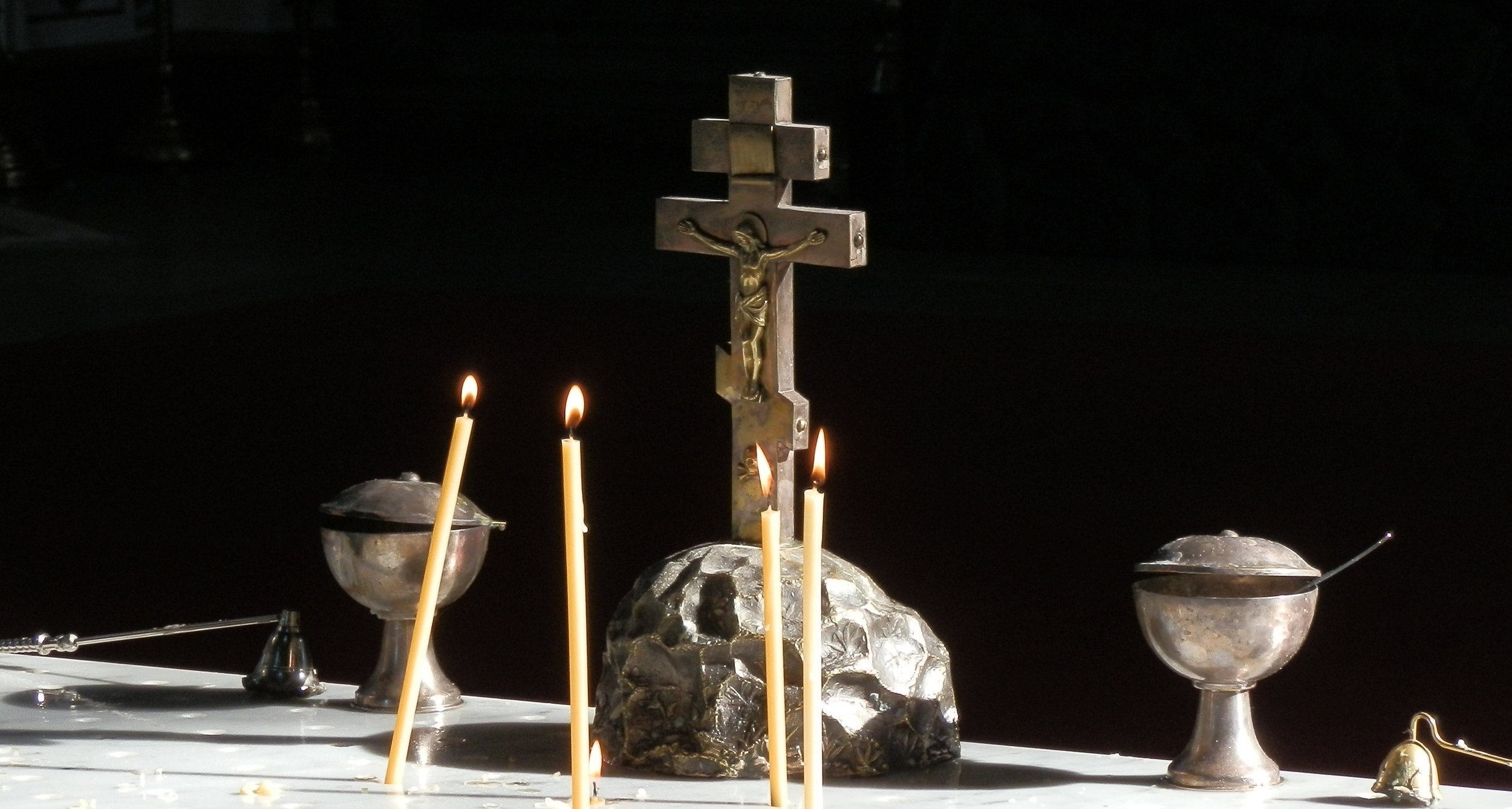Healing Atonement
Cyril of Alexandria (c.376 - 444 AD)
An old clay oil lamp from Nazareth, Israel. Photo credit: Olivia Armstrong.
The Writings of Cyril of Alexandria
Cyril of Alexandria, Commentary on John's Gospel (~410 AD, CCEL website) see 1:14, "the fallen body united ineffably to the Word"
Cyril of Alexandria, Commentary on Romans (fragment) says "the whole world has been saved"
Cyril of Alexandria, Commentary on Romans (?) says, “Perhaps some people will think that “the body of sin” is meant to refer to our earthly flesh, which has been joined to the soul as a king of punishment, in that the soul sinned before bodies were created. Some people think and talk like this, but as it is a pagan idea we must reject it as being incompatible with the truth. Therefore, Paul says that our earthly body is the body of sin and our old man, because it has inherited the necessity of corruption from the old Adam… Moreover, because of its weakness it has contracted a love for wickedness, and thus sin appears in the flesh as a congenital defect. We were crucified with Christ at the moment when his flesh was crucified, because it somehow included universal human nature in itself, just as universal human nature contracted the sickness of the curse in Adam at the same time that he incurred the curse.” (from the app Catena, Romans 6:6)
Cyril of Alexandria, In Ioannis evangelium, MPG LXXIII, 753A - 756C; LXXIV, 276A - C refers to "sinful flesh"
Cyril of Alexandria, De incarnatione unigeniti, MPG LXXV, 1213B - D
Cyril of Alexandria, Scholia, MPG LXXV, 1388BC, 1397B; and 1390C - 1391A compares Jesus healing human nature to God healing Moses' hand of leprosy; cf. Glaphyra in Leviticum, MPG LXIX, 553A - 580A
Cyril of Alexandria, Quod unus sit Christus, MPG LXXV, 1332A - D
Cyril of Alexandria, De Incarnatione Domini, MPG LXXV, 1441D- 1445B
Cyril of Alexandria, Fragmenta in Diodorum, MPG LXXVI, 1430C - D
Cyril of Alexandria, Adversus Nestorium, MPG LXXVI, iii, 164A - D
Cyril of Alexandria, Thesaurus, MPG LXXV, 272D - 273A; 392D - 401B; 468D - 469A
Cyril of Alexandria, Contra Orientales, MPG LXXVI, 321C - 324A
More Resources on Cyril of Alexandria
T.F. Torrance, Theology in Reconciliation. Wipf and Stock | Amazon page, 1996. See p.156 - 185
Donald Fairbairn, "Justification in St. Cyril of Alexandria", edited by Matthew Baker and Todd Speidell, T.F. Torrance and Eastern Orthodoxy. Wipf and Stock | Amazon book, 2015. Fairbairn on p.139 notes that in Cyril, Jesus is "the justified one," and our justification is by participation with him; justification may be forensic language but there is an underlying ontological reality to which it refers and upon which it stands
John Meyendorff, Imperial Unity and Christian Divisions: The Church, 450 - 680 AD. St. Vladimir’s Seminary Press | Amazon book, Jan 1, 1989. An outstanding Orthodox theologian and historian, Meyendorff makes a historical note on how disciples of Cyril of Alexandria introduced the idea of Jesus taking a cleansed humanity from conception.
Lewis Ayres, The Christology of Justinian. Sheptytsky Institute, Jul 16, 2022. An examination of the Fifth Ecumenical Council 553 and its dogmatic formula. Draws heavily on Cyril of Alexandria. Justinian also drew on the language of Severus of Antioch, who was opposed to Chalcedon 451, to build bridges.
Sources of Atonement Theology
These resources explore the foundation of “Medical Substitution” as the best understanding of the Bible, and the original understanding of the church. There are also links to books, web articles, etc. from representatives of the three broad Christian traditions.





